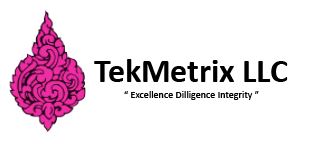Implementing Machine Learning in Your SAP S4 BW4 Platform
There are four components that have advanced the use cases for AI:
- AI software development and AutoML tools:
- TensorFlow
- Python
- R
- Julia
- H20.ai
- AutoGluon
- Automl-docker
- TekMetrix Skills
- Scientists and engineers using smart tools
- Strategy and analytics
- Computation
- Accelerated AI ML computers (CPU, GPU, DPU)
- Cloud providers of an AI stack
- Data
- SAP and corporate enterprise data as training data
- Internet data as training data
Machine learning is about creating an algorithm that can provide a prediction. These algorithms are based on mathematics. The mathematics are linear algebra, statistics, calculus and probability. Statistics is at the core of machine learning. Calculus determines how to learn and optimize a prediction; linear algebra allows the algorithm to run on large data sets and probability predicts the likelihood of an event occurring. There are variants to these algorithms that need to be understood so that the best Machine Learning model can be applies to a particular problem. These Machine Learning models are:
- Linear Regression
- Logistic Regression
- Decisions Trees
- SVM
- KNN
- Dimensionality Reduction
- Random Forecast
- K-Means
- Naïve Bayes
- Others
Machine learning use cases applied to SAP:
- Intelligent Automation and Process Optimization:
- ML can automate repetitive tasks, enhance accuracy, and reduce manual effort.
- There are 100's of use cases which include invoice processing, supply chain optimization, and workflow automation.
- Demand forecasting, AOP, S&OP and profitability management:
- ML models on S4 data, IBP, APO, BW4 Hana can predict demand patterns, optimize inventory levels, and improve supply chain efficiency. We write these in R on the Hana database.
- Benefits are improved production planning, inventory replenishment, improved trade promotion management, SKU level demand forecasting, and warehouse management.
- Customer Experience and Personalization:
- ML enables personalized recommendations, sentiment analysis, customer life time buy, BTYD, retention strategies, marketing campaigns, and customer segmentation.
- Enhance sales, marketing, and customer service processes.
- Financial Fraud Detection and Risk Management:
- ML algorithms can detect anomalies, identify fraudulent transactions, and assess credit risk.
- Improve financial processes, credit scoring, and fraud prevention.
- Quality Control and Maintenance:
- ML helps monitor product quality, predict equipment failures, and optimize maintenance schedules.
- Enhance production, maintenance, and quality assurance
- Supplier Relationship Management:
- ML assists in evaluating supplier performance, predicting delivery delays, and optimizing sourcing decisions.
- Streamline procurement and supplier collaboration.
- Human Resources and Talent Management:
- ML can analyze employee data, predict attrition, and recommend personalized learning paths.
- Optimize workforce planning, talent acquisition, and employee development.
- Supply Chain Visibility and Logistics:
- ML provides real-time insights into shipments, route optimization, and delivery tracking.
- Improve logistics, transportation management, and supply chain visibility.
- Energy Management and Sustainability:
- ML models analyze energy consumption patterns, optimize resource usage, and reduce environmental impact.
- Support sustainability initiatives and energy efficiency.
- Sales and Revenue Optimization:
- ML assists in pricing strategies, sales forecasting, and cross-selling recommendations.
- Enhance sales performance, pricing, and revenue management.
There are many uses cases for Machine Learning in business for SAP. Tools in SAP include PAL, APL, R, and PAi-ISLM. We leverage BTP for deep neural networks. First, however, the best Machine Learning model should be selected for the job.



